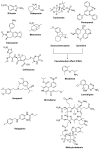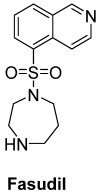Comprehensive Research on Past and Future Therapeutic Strategies Devoted to Treatment of Amyotrophic Lateral Sclerosis
- PMID: 35269543
- PMCID: PMC8910198
- DOI: 10.3390/ijms23052400
Comprehensive Research on Past and Future Therapeutic Strategies Devoted to Treatment of Amyotrophic Lateral Sclerosis
Abstract
Amyotrophic lateral sclerosis (ALS) is a rapidly debilitating fatal neurodegenerative disorder, causing muscle atrophy and weakness, which leads to paralysis and eventual death. ALS has a multifaceted nature affected by many pathological mechanisms, including oxidative stress (also via protein aggregation), mitochondrial dysfunction, glutamate-induced excitotoxicity, apoptosis, neuroinflammation, axonal degeneration, skeletal muscle deterioration and viruses. This complexity is a major obstacle in defeating ALS. At present, riluzole and edaravone are the only drugs that have passed clinical trials for the treatment of ALS, notwithstanding that they showed modest benefits in a limited population of ALS. A dextromethorphan hydrobromide and quinidine sulfate combination was also approved to treat pseudobulbar affect (PBA) in the course of ALS. Globally, there is a struggle to prevent or alleviate the symptoms of this neurodegenerative disease, including implementation of antisense oligonucleotides (ASOs), induced pluripotent stem cells (iPSCs), CRISPR-9/Cas technique, non-invasive brain stimulation (NIBS) or ALS-on-a-chip technology. Additionally, researchers have synthesized and screened new compounds to be effective in ALS beyond the drug repurposing strategy. Despite all these efforts, ALS treatment is largely limited to palliative care, and there is a strong need for new therapeutics to be developed. This review focuses on and discusses which therapeutic strategies have been followed so far and what can be done in the future for the treatment of ALS.
Keywords: amyotrophic lateral sclerosis (ALS); apoptosis; axonal degeneration; edaravone; glutamate excitotoxicity; induced pluripotent stem cells (iPSCs); neuroinflammation; oxidative stress; protein aggregation; riluzole.
Conflict of interest statement
The authors declare no conflict of interest.
Figures

















Similar articles
-
Riluzole and edaravone: A tale of two amyotrophic lateral sclerosis drugs.Med Res Rev. 2019 Mar;39(2):733-748. doi: 10.1002/med.21528. Epub 2018 Aug 12. Med Res Rev. 2019. PMID: 30101496 Review.
-
Impact of Plant-Derived Compounds on Amyotrophic Lateral Sclerosis.Neurotox Res. 2023 Jun;41(3):288-309. doi: 10.1007/s12640-022-00632-1. Epub 2023 Feb 17. Neurotox Res. 2023. PMID: 36800114 Review.
-
Current therapy in amyotrophic lateral sclerosis (ALS): A review on past and future therapeutic strategies.Eur J Med Chem. 2024 Jun 5;272:116496. doi: 10.1016/j.ejmech.2024.116496. Epub 2024 May 16. Eur J Med Chem. 2024. PMID: 38759454 Review.
-
A perspective on therapies for amyotrophic lateral sclerosis: can disease progression be curbed?Transl Neurodegener. 2021 Aug 10;10(1):29. doi: 10.1186/s40035-021-00250-5. Transl Neurodegener. 2021. PMID: 34372914 Free PMC article. Review.
-
Two Decades-Long Journey from Riluzole to Edaravone: Revisiting the Clinical Pharmacokinetics of the Only Two Amyotrophic Lateral Sclerosis Therapeutics.Clin Pharmacokinet. 2018 Nov;57(11):1385-1398. doi: 10.1007/s40262-018-0655-4. Clin Pharmacokinet. 2018. PMID: 29682695 Review.
Cited by
-
The role of glycogen synthase kinase 3 beta in neurodegenerative diseases.Front Mol Neurosci. 2023 Sep 15;16:1209703. doi: 10.3389/fnmol.2023.1209703. eCollection 2023. Front Mol Neurosci. 2023. PMID: 37781096 Free PMC article. Review.
-
Lateral olfactory tract usher substance (LOTUS), an endogenous Nogo receptor antagonist, ameliorates disease progression in amyotrophic lateral sclerosis model mice.Cell Death Discov. 2023 Dec 14;9(1):454. doi: 10.1038/s41420-023-01758-7. Cell Death Discov. 2023. PMID: 38097540 Free PMC article.
-
Proteomic profiling of the brain from the wobbler mouse model of amyotrophic lateral sclerosis reveals elevated levels of the astrogliosis marker glial fibrillary acidic protein.Eur J Transl Myol. 2023 Aug 8;33(3):11555. doi: 10.4081/ejtm.2023.11555. Eur J Transl Myol. 2023. PMID: 37565261 Free PMC article.
-
"Calcium bombs" as harbingers of synaptic pathology and their mitigation by magnesium at murine neuromuscular junctions.Front Mol Neurosci. 2022 Jul 26;15:937974. doi: 10.3389/fnmol.2022.937974. eCollection 2022. Front Mol Neurosci. 2022. PMID: 35959105 Free PMC article.
-
Sporadic Amyotrophic Lateral Sclerosis Skeletal Muscle Transcriptome Analysis: A Comprehensive Examination of Differentially Expressed Genes.Biomolecules. 2024 Mar 20;14(3):377. doi: 10.3390/biom14030377. Biomolecules. 2024. PMID: 38540795 Free PMC article. Review.
References
Publication types
MeSH terms
Substances
LinkOut - more resources
Full Text Sources
Medical
Miscellaneous

